Giving your bathroom a fresh look needn’t cost a fortune – especially when you plan ahead.
Labour costs are a significant part of any bathroom redesign, so start by looking at how you can cut these. One simple tip is to keep your WC and sanitaryware in the same positions and simply update the pieces themselves. That way, you don’t need to budget for relocating the plumbing system.
You can also save money by choosing floor-standing sanitaryware over wall-hung options. Costs can creep up when you need to call on specialists to conceal frames and systems.
There are plenty more ways you can save money on a bathroom project. We asked a selection of experts for their tips on cost-effective design: read on for their ideas.
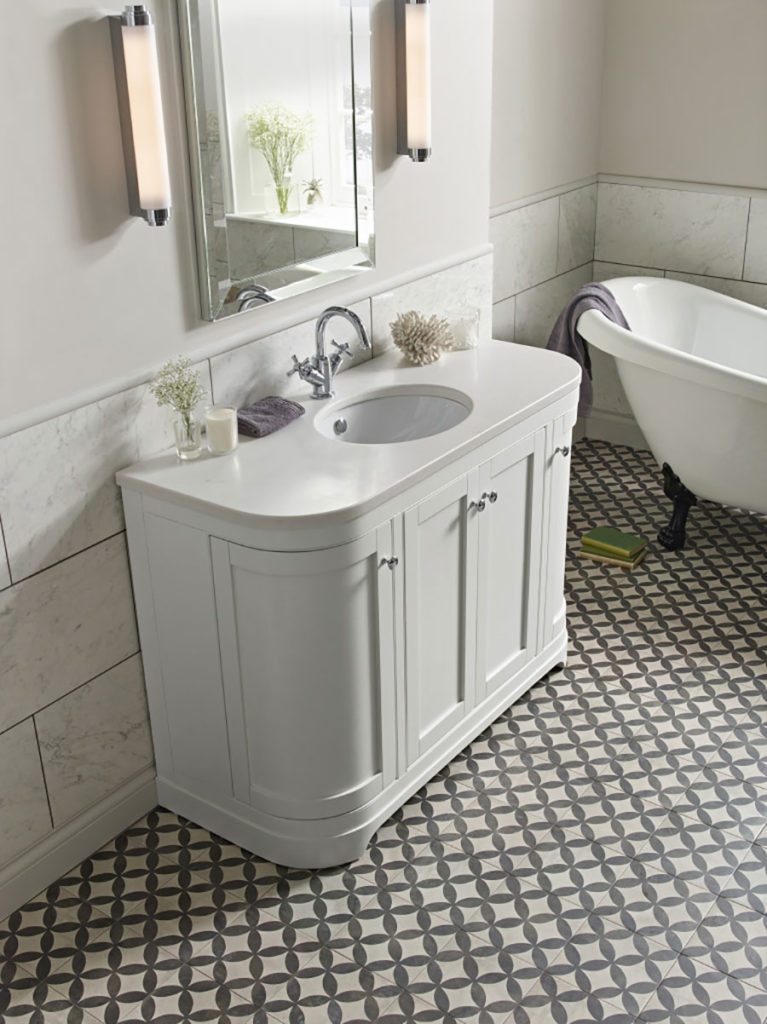
From Laura Ashley Bathroom Collection comes the curved 1200mm Marlborough basin unit in Cotton White, priced from £1,150, with underslung ceramic basin, £150, and honed marble worktop, £499. The finishing touch is the York basin mixer at £177.50.
Update with tiles
A new set of tiles is a simple way to uplift an outdated space. They’re durable and low maintenance, so they’re perfect for a room prone to humidity.
Before you spend any money, use an online visualiser tool to work out which tiles will suit your space. Then start small: “We would always recommend ordering a cheap sample of the tiles which take your interest,” says Peter Swain, tiling expert at Tile Trader. “This will give you the opportunity to try out the tiles before committing to placing a large order, ensuring the tiles you choose will work best for your bathroom and help avoid costly reorders.”
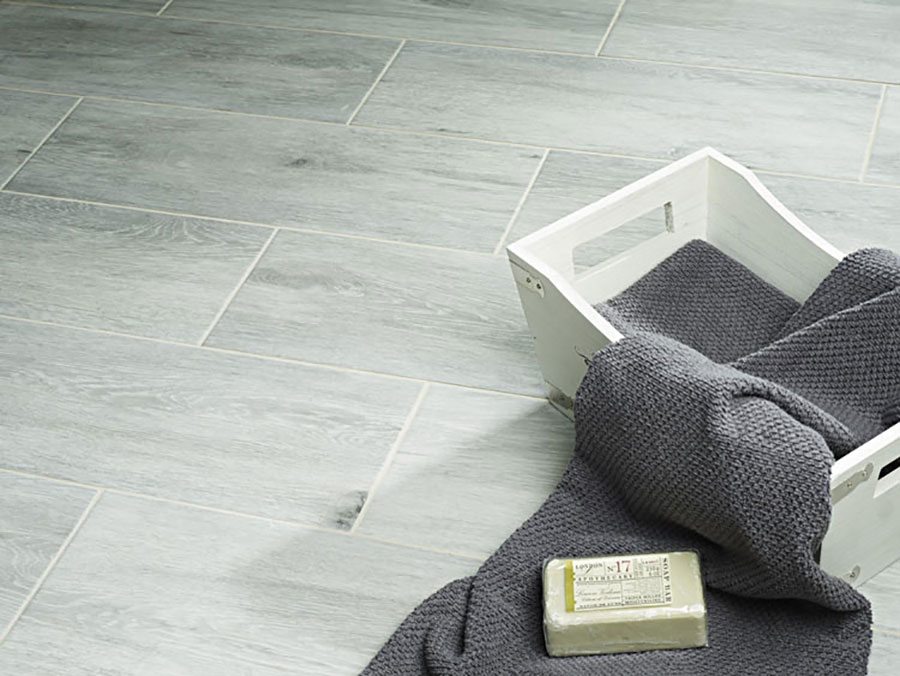
Niove silver wood-effect tiles, 17.5 x 50cm, from Tile Trader, 87p per tile or £9.94 per sq m.
Do it yourself
Another way to control costs – and add personality – is to tile just halfway up the wall and in areas that come into contact with water. “This will require fewer tiles, and it also gives you the option to change the colour scheme or mood of the bathroom just by painting the wall area above your tiling,” explains Peter.
You could also opt for larger-format tiles, which saves pounds because you won’t need to purchase as many. An added benefit is that your bathroom will have a smoother finish as there will be fewer grout lines.
Cut costs further by doing your own tiling. There’s plenty of help on hand in the form of self-help guides and online tutorials. Make the most of resources closer to home too: “Pop into your local tile store for advice on the best tools, tiles and grouts to use,” says Sian O’Neill, head of marketing and online at Topps Tiles.
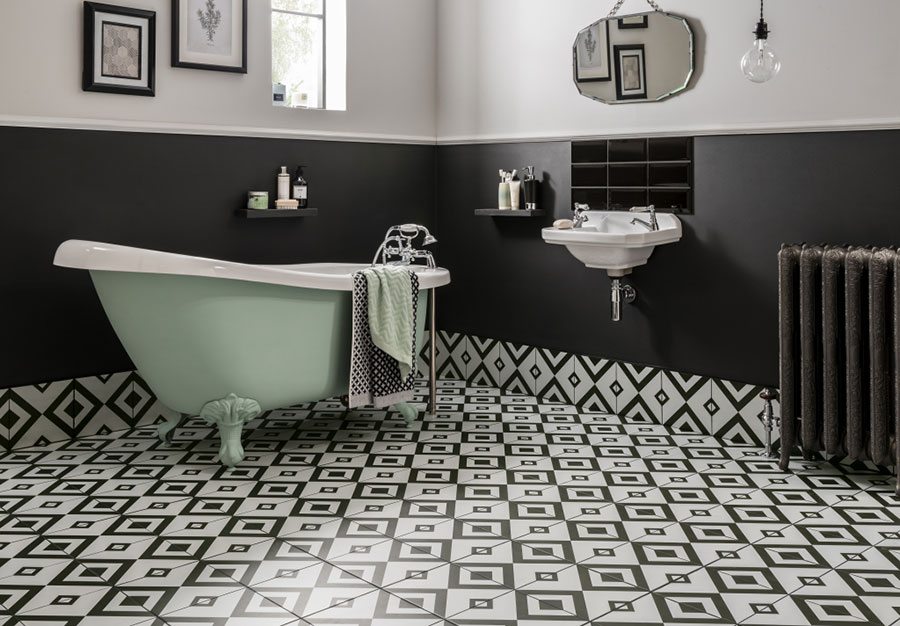
This dramatic monochrome tile (45cm x 45cm) creates instant impact with bold geometric diamonds. Expect to spend around £67.56 per sq m at Topps Tiles.
Take a look through our guide to bathroom flooring for more tile inspiration
High end, low cost
Natural stone tiles are a timeless bathroom trend thanks to their subtle style and hardwearing properties. However, they can be expensive and aren’t suitable for rooms exposed to water because of their naturally porous surface.
“Fortunately, there are plenty of natural stone-effect tiles to choose from,” says Sian. “These tiles are made out of porcelain, a naturally waterproof material, and the versatility of the material means that it can easily be manipulated to look and feel like natural stone, allowing homeowners to get the look for a cut of the price.”
Mosaic tiles are another great way of adding colour and interest to your bathroom without breaking the bank. “Just a few sheets can go a long way, as they can be easily cut into strips to create borders or focal-point feature panels,” says Peter.
Patterns are a great way to add personality to budget materials. “The herringbone layout is a key tiling trend that works perfectly with inexpensive ceramic tiles, either laid horizontally, vertically or diagonally,” Peter adds.
Use a contrasting grout colour to make a feature of the joints; for example, combine grey grout with affordable white Metro tiles to add a contemporary twist. This will look especially striking when teamed with grey floor tiles.
“For even more contrast, you could select tiles from completely different ranges to create your own unique look,” says Peter. “You could even mix tiles in different materials and finishes to give your bathroom a stunning finish, reminiscent of a high-end boutique hotel.”
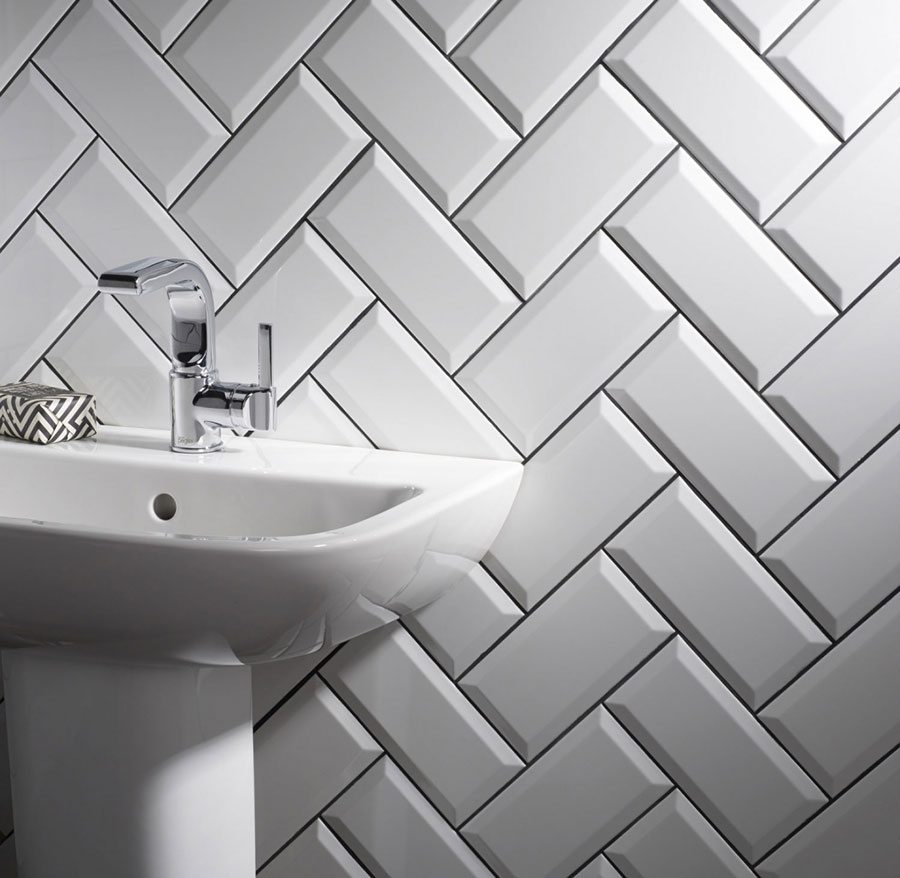
White Metro wall tile from Tile Trader laid in a herringbone pattern is priced 17p per tile or £8.50 per sq m.
Save time with wall panelling
If you can’t face the thought of days of disruption while putting up tiles, think about wall panelling. It’s 100% waterproof and you can install it yourself directly over existing tiles.
“Installation can be completed within a day for minimum disruption and the surface is easier to clean and maintain than tiles on an ongoing basis with no grout lines to scrub,” explains Claire Lambert, product director at Showerwall.
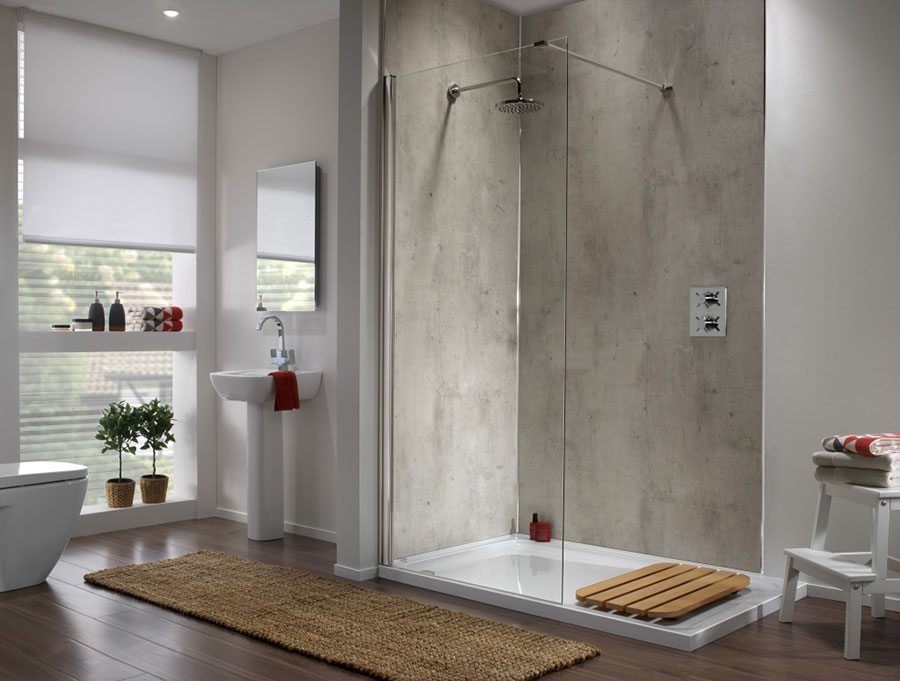
Urban Concrete from Showerwall’s newly updated Design Selection collection is 100% waterproof and available in a choice of panel sizes with a 15-year guarantee. From around £91.20 per sq m.
A lick of paint
For a big transformation at a low cost, add colour with a fresh coat of paint. Just make sure you choose one that can stand up to warm, damp conditions, such as Dulux Bathroom+. “In less time than it takes to put up a row of tiles you can paint the walls and ceiling. It’s the quickest change you can make,” says Dulux creative director Marianne Shillingford.
“Preparation is the key to an easy, long-lasting paint job,” Marianne continues. “Clean the walls and repair any small cracks. Mask off the tiles and areas you’re not going to paint then start from the top with the ceiling first and skirting boards last.”
We tend not to spend much time in the bathroom, so choose colours that make an instant statement. “Go for dark muted and atmospheric shades in a sophisticated grown up bathroom and clean, bright colours for a family space,” advises Marianne. Download the free Dulux visualiser app so you can see what colours look like on the walls in real time and order testers from the app so you can try colours out before you start the decorating.
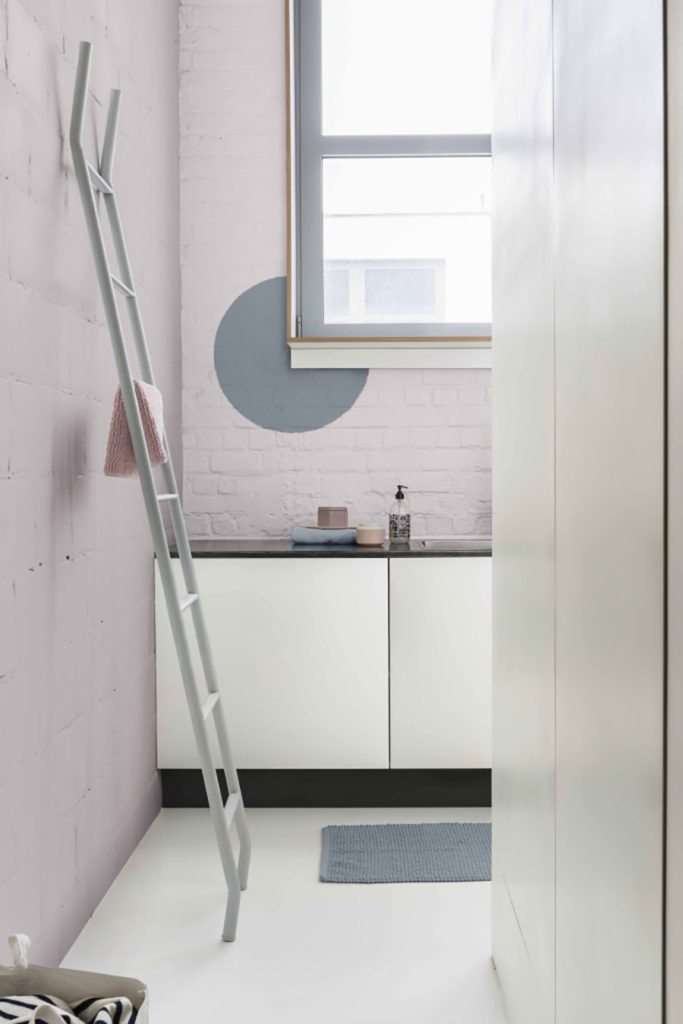
Dulux Flat Matt Chic Lilac, Pale Peony and Denim Drift priced around £24.49 each for 2.5L.
Invest now, save later
Investing in good-quality products makes good financial sense, particularly when it comes to brass-ware. This is not only a pleasure to use, but will last a lot longer than cheaper alternatives. “Brass-ware that’s manufactured using a solid brass-bodied construction is robust and durable and will stand the test of time,” explains Helen Shaw, marketing manager at Laura Ashley Bathroom Collection. Seek out companies that offer guarantees on their products for complete peace of mind.
Always choose brass-ware that will work with your water supply to make you get more than a trickle of water when you turn the tap on. “Low-pressure taps are compatible with all plumbing systems, including conventional gravity-fed systems, which are often found in older homes. High-pressure taps that require a minimum 0.5 bar pressure are suited to mains-fed water systems,” Helen adds.
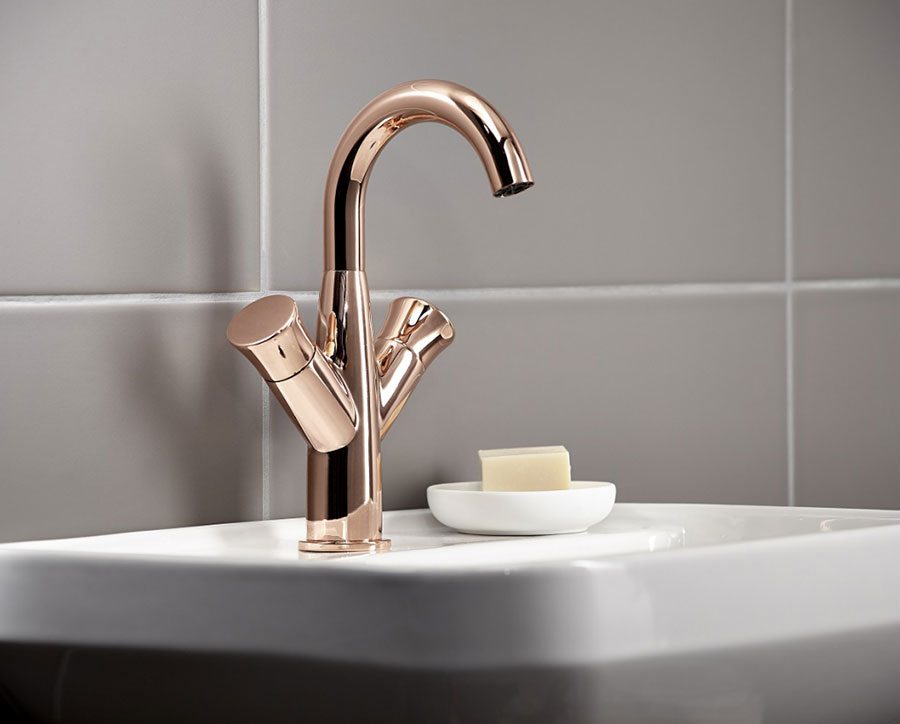
The Transition rose gold basin mixer from Bathstore creates a stunning statement piece thanks to its fusion of traditional and contemporary design. Priced from £249.
Shower, bath or both?
Think about a shower-bath if you’re keen to save space as well as money investing in a separate bath and shower. If you prefer the convenience of a shower enclosure, low profile shower trays and slender frames are now standard fare.
As ever, you can save cash by fitting the shower enclosure yourself. Keep stress levels low by looking for products designed for amateur installation, such as the Iconic Express collection from Merlyn Showering.
“Plan ahead, make sure you have the tools ready, prepare the space and give yourself room to move,” advises Edel Nicholson from Merlyn. “Although the Express range has the fast-fit system, don’t put yourself under pressure in terms of time.”
Browse through our guide to baths for more inspiration
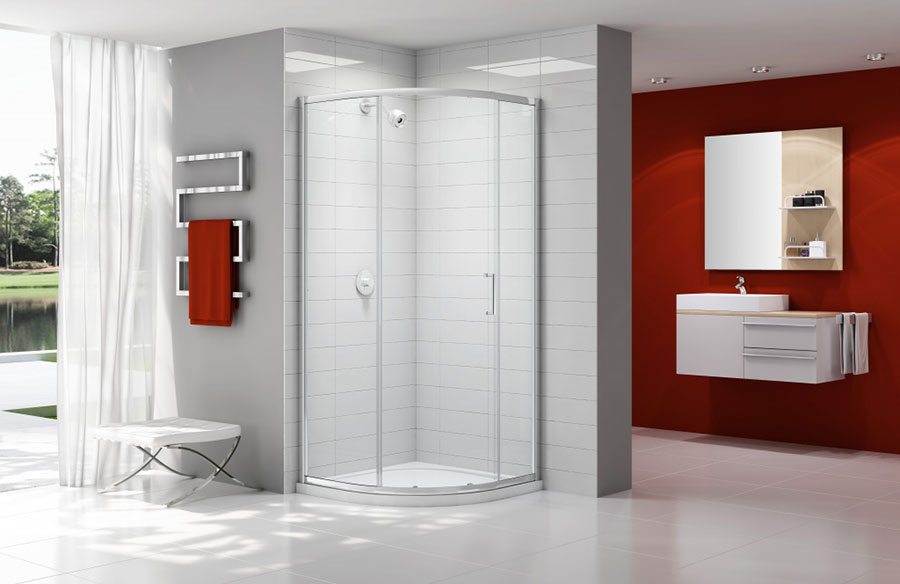
The Express Quadrant from Merlyn Showering’s Iconic collection is priced £586 and features 6mm of toughened glass, easy-clean quick-release rollers and concealed fittings. It comes with a 20-year guarantee.
More money savers
Shower valves allow you to control the flow of water coming out of the showerhead and set its temperature. They can either be concealed behind the wall of a shower enclosure with only the control plate and handles on display, or exposed, which means that pipework is visible within the enclosure. This isn’t as sleek, but it’s easier to install as it doesn’t need pipework to be chased into the wall. It’s also easier to repair if things go wrong.
“When updating a bathroom on a budget, the cost of installation is often overlooked or underestimated,” says Matt Hicks, design expert at Bristan. “Even though the purchase price of exposed and concealed showers can be similar, concealed are overall more costly in terms of installation time, and will involve a level of re-tiling to accommodate the valve.”
You could also consider an electric shower rather than a mixer one. “Mixer showers blend hot and cold water together, whereas electrics require only a cold-water feed and heat only the water you instantly need,” Matt continues.” This makes electric showers cost-effective to run and ready with hot water even if the boiler breaks down. As a bonus, they’re also easy to install.
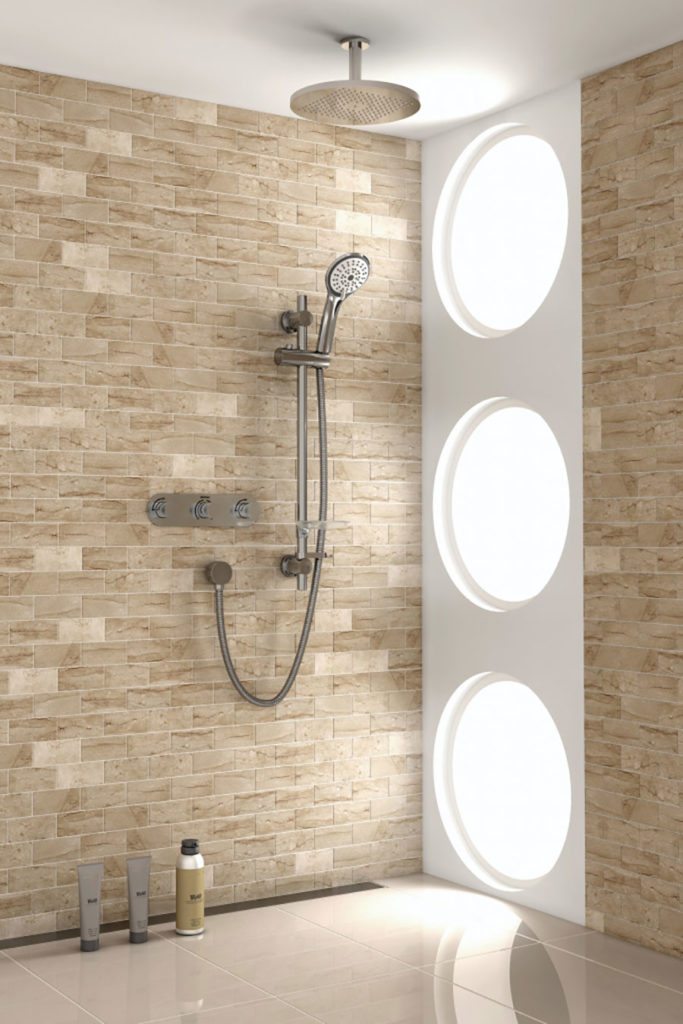
The Tria shower pack from Bristan includes an exposed thermostatic valve and 200mm fixed-head shower rose with ceiling arm, priced around £533.
Pocket-friendly vinyl flooring
The average British bathroom is small, so replacing the flooring shouldn’t cost you a fortune. This is especially true if you opt for an affordable covering such as vinyl.
Go for the sheet variety if you’re looking for low initial costs: it’s easy to install and incredibly durable. However, it can be difficult to repair, so, if your bathroom is a high-traffic area you could consider luxury vinyl tiles. These are more expensive than sheet vinyl but offer increasingly realistic wood or stone-effect designs and are water resistant, hard-wearing and simple to fit. The added benefit is that they’re easy to replace if they’re damaged.
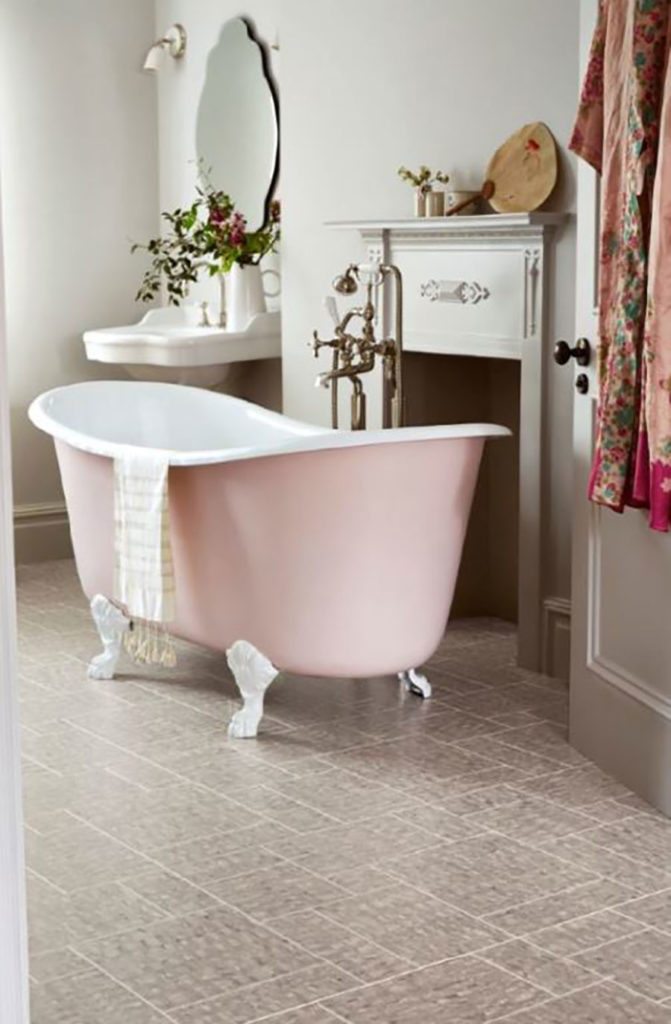
Alchemy Atmosphere from the Amtico Signature collection is priced from around £70 per sq m.
Look out for laminate
Laminate tends to be reasonably priced, low maintenance and water resistant. It’s made in layers: a bottom layer to resist moisture; an inner core that reinforces moisture resistance and increases durability; a design layer featuring a high-definition image (which can imitate anything from wood to stone to metal); and a top layer (the wear layer) that protects the design from wear and tear.
There was a time when style was sacrificed for affordability. However, advanced printing technology means that laminate floors now look increasingly like the natural materials they’re imitating.
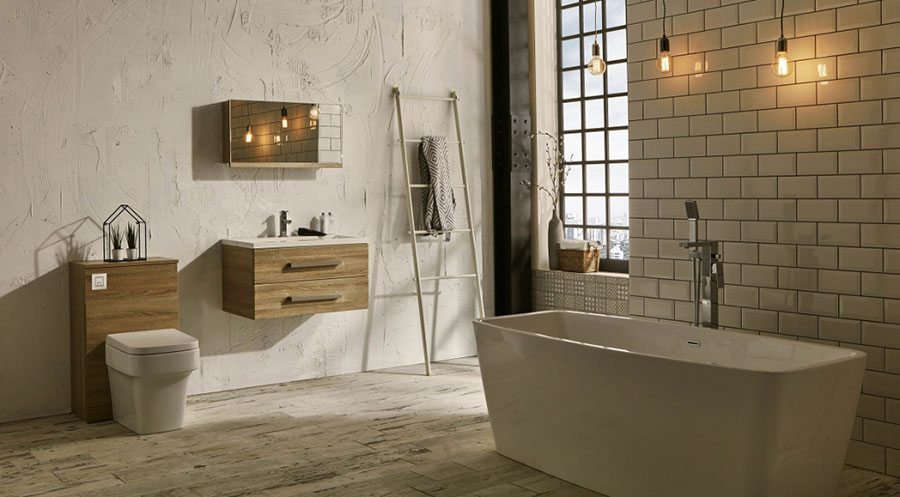
Water resistant, with an easy-to-clean antibacterial coating, the laminate Finesse collection from Frontline Bathrooms provides a stylish and durable surface. Priced £95 per pack (one pack includes nine panels).
Click here for pocket-friendly instant updates for your bathroom